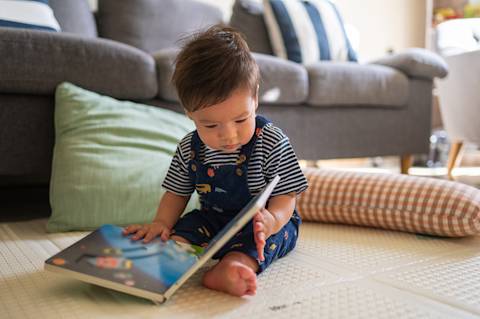Every day, you’re doing an amazing job providing for and loving your child. You make the meals they enjoy and read the stories that spark their imagination. But there will always be difficult moments, tears, and outbursts. Staying calm in these stressful moments can help build your bond with your child and keep your relationship strong.

Another benefit of remaining calm in emotional moments is that your child will start to pick up on your behavior. They’re watching and learning from everything you do. By modeling being calm under pressure—especially when it’s difficult to do—you’re teaching them those skills too. When stressful moments happen, test out any of these strategies to stay calm. You can even write them down and keep them handy so you can reference them in times of need:
When a situation first becomes stressful, pause and take a deep breath. Our knee-jerk reactions are often just that: reactions. Taking just a few seconds to stop and collect your thoughts before acting can have a huge impact.
In that moment of pause, identify the emotions you’re feeling and why the particular situation brought them about. Often, our reactions to challenging situations come from difficult moments in our own childhood. Think about how the stressor may be connected to your fears, insecurities, or negative childhood experiences. Knowing this can help you face these difficult moments in the future.
Challenge negative thoughts. When facing a stressful moment, you may find your thoughts spiraling out of control: Why is my child so whiny? Why can’t they just do what I say? Instead, try giving yourself an internal pep talk by thinking about ways you loved and supported your child that day. Trying to change negative thoughts can have a huge impact on how you view the situation and help you feel calmer.
Turn on calming music. Research shows that listening to music can calm your body and can even help your child calm down too. Studies show the most stress-relieving music is Native American, Celtic, or Indian stringed-instruments, drums, and flutes. You can also try sounds of rain, thunder, and nature mixed with other music, such as light jazz, classical, and easy listening.
Flex different muscles in your body, and then let each muscle relax one at a time. This is called progressive muscle relaxation. Practice this technique togive yourself a greater sense of control over your body's physical symptoms of anxiety. Start with the muscles in your forehead, working down to the muscles in your face and jaw, followed by the neck, and continuing to move down your body. You can even teach your child this technique to help them calm down when they’re feeling stressed.
Do a physical activity, like going for a walk, cleaning the house, gardening, yoga, and more. Moving your body will increase the production of your brain's feel-good neurotransmitters called endorphins. It also helps protect your body from the harmful, long-term effects of stress and puts your focus on something outside of the difficult moment you’re facing.
Keeping your cool in tense moments is not easy. But with practice and some effective strategies, you can improve this skill over time while teaching your child positive coping strategies.






